The serotonin receptors, also known as 5-hydroxytryptamine receptors or 5-HT receptors, are a group of G protein-coupled receptors (GPCRs) and ligand-gated ion channels (LGICs) found in the central and peripheral nervous systems. They mediate both excitatory and inhibitory neurotransmission. The serotonin receptors are activated by the neurotransmitter serotonin, which acts as their natural ligand.
Contents
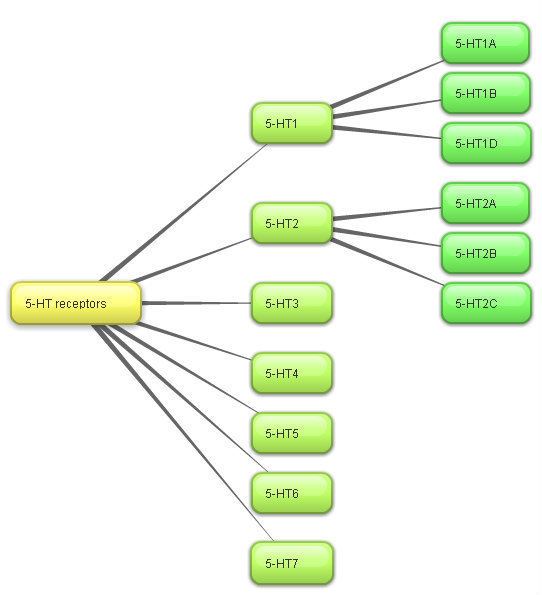
The serotonin receptors modulate the release of many neurotransmitters, including glutamate, GABA, dopamine, epinephrine / norepinephrine, and acetylcholine, as well as many hormones, including oxytocin, prolactin, vasopressin, cortisol, corticotropin, and substance P, among others. The serotonin receptors influence various biological and neurological processes such as aggression, anxiety, appetite, cognition, learning, memory, mood, nausea, sleep, and thermoregulation. The serotonin receptors are the target of a variety of pharmaceutical drugs, including many antidepressants, antipsychotics, anorectics, antiemetics, gastroprokinetic agents, antimigraine agents, hallucinogens, and entactogens.
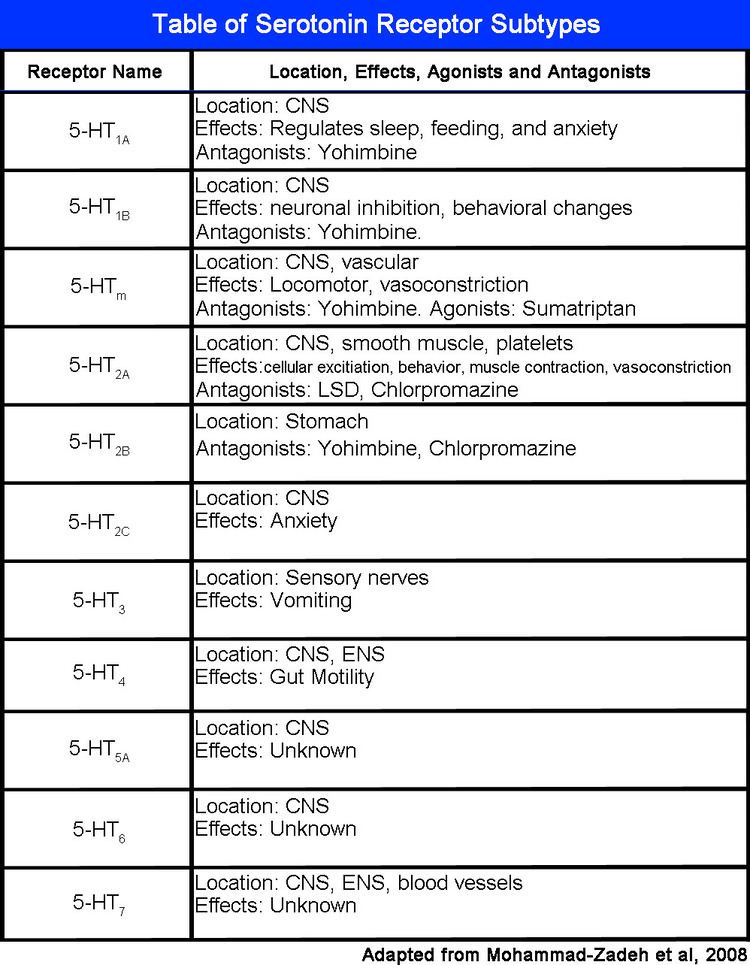
Serotonin receptors are found in almost all animals and humans and are even known to regulate longevity and behavioral aging in the primitive nematode, Caenorhabditis elegans.
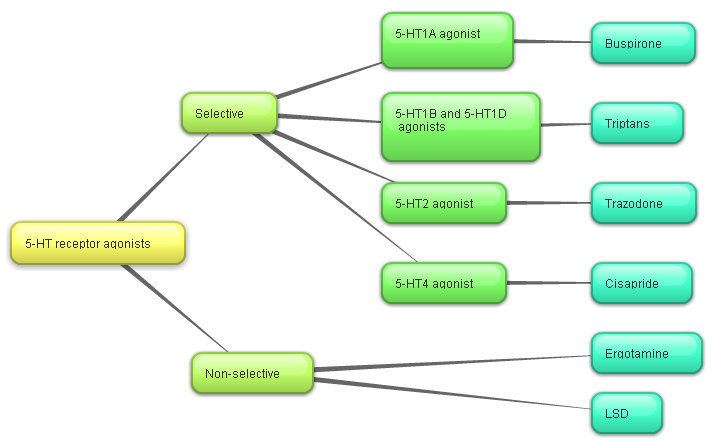
Classification
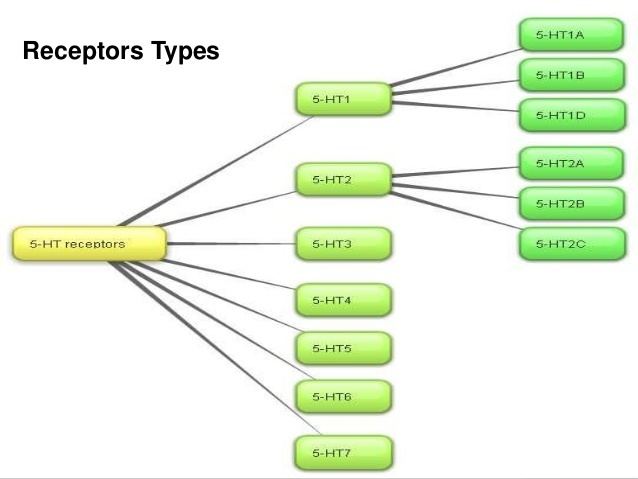
With the exception of the 5-HT3 receptor, a ligand-gated ion channel, all other serotonin receptors are G protein-coupled receptors that activate an intracellular second messenger cascade to produce an excitatory or inhibitory response. In 2014 a novel 5-HT receptor was described that was isolated from the small white butterfly, Pieris rapae, and named pr5-HT8. It shares relatively low similarity to the known 5-HT receptor classes and does not occur in mammals.
Subtypes
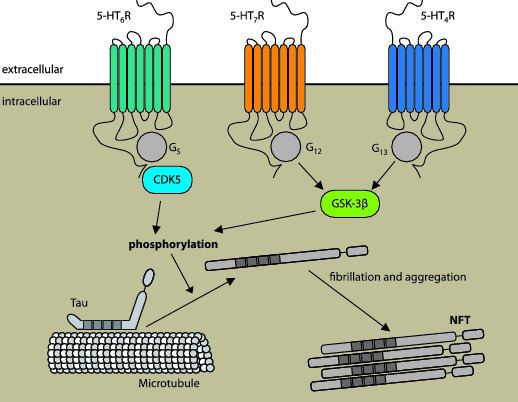
The 7 general serotonin receptor classes include a total of 14 known serotonin receptors. The specific types have been characterized as follows:
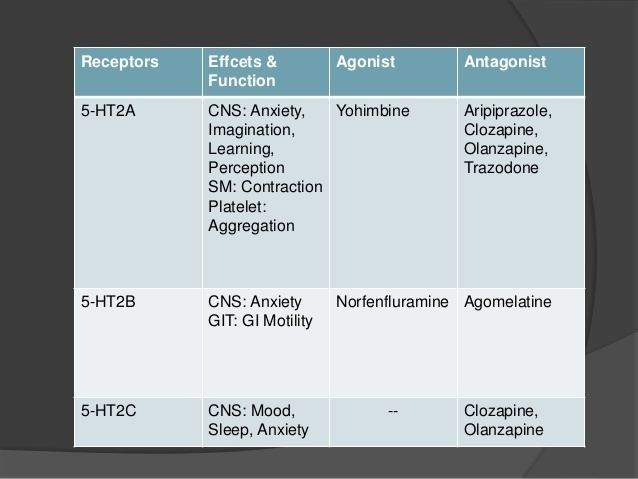
Note that there is no 5-HT1C receptor since, after the receptor was cloned and further characterized, it was found to have more in common with the 5-HT2 family of receptors and was redesignated as the 5-HT2C receptor.
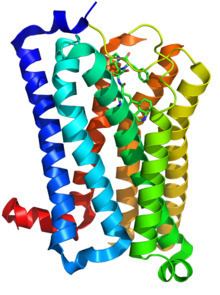
Very nonselective agonists of 5-HT receptor subtypes include ergotamine (an antimigraine), which activates 5-HT1A, 5-HT1D, 5-HT1B, D2 and norepinephrine receptors. LSD (a psychedelic) is a 5-HT1A, 5-HT2A, 5-HT2C, 5-HT5A, 5-HT5, 5-HT6 agonist.
